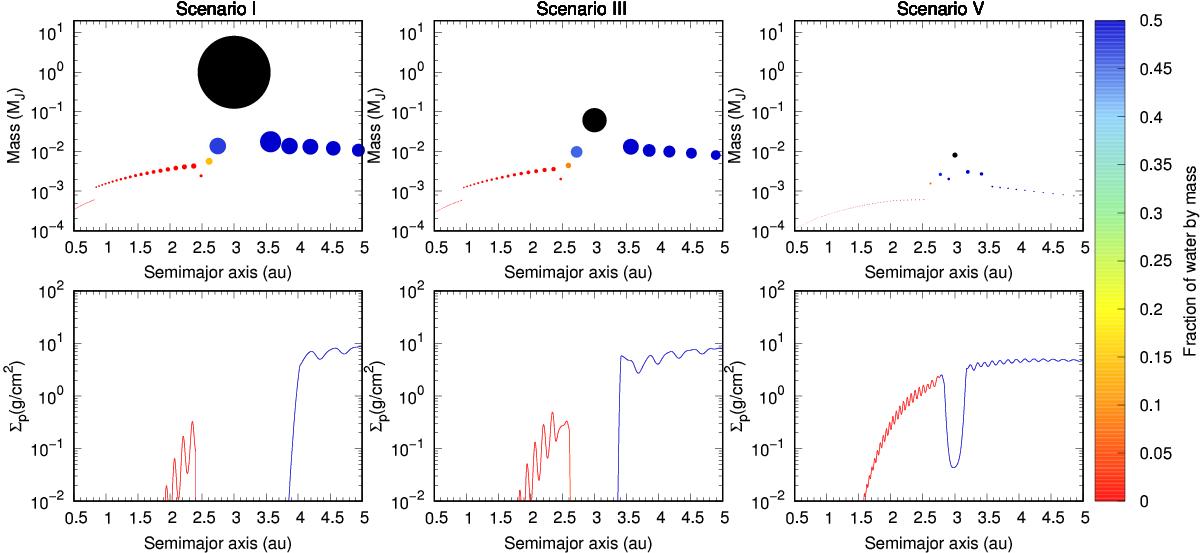Fig. 2

Embryo distributions (top panels) and surface density of planetesimals (bottom panels) for three of the five scenarios with Jupiter (I), Neptune (III), and super-Earth (V) analogs at the end of the gas phase. The masses of the disks are ~ 0.11 M⊙ for the planetary system with a Jupiter analog of 318 M⊕, ~ 0.09 M⊙ for the planetary system with a Neptune analog of 19.7 M⊕, and 0.04 M⊙ for a planetary system with a super-Earth analog of 2.5 M⊕. The size of the points representing the embryo distributions is scaled by their total mass, except for the most massive planets. The color scale represents the final fraction of water of the embryos with respect to their total masses and of the surface density of planetesimals at the end of the gaseous phase. These embryo and planetesimal distributions were used as initial conditions to develop N-body simulations.
Current usage metrics show cumulative count of Article Views (full-text article views including HTML views, PDF and ePub downloads, according to the available data) and Abstracts Views on Vision4Press platform.
Data correspond to usage on the plateform after 2015. The current usage metrics is available 48-96 hours after online publication and is updated daily on week days.
Initial download of the metrics may take a while.


